Interior designers are targeting tong-laus (tenement buildings) built from the late 19th century to the 1960s in Hong Kong, Macau, southern China and Taiwan) and completely revamping the interiors into new, old-Shanghai styled apartments.
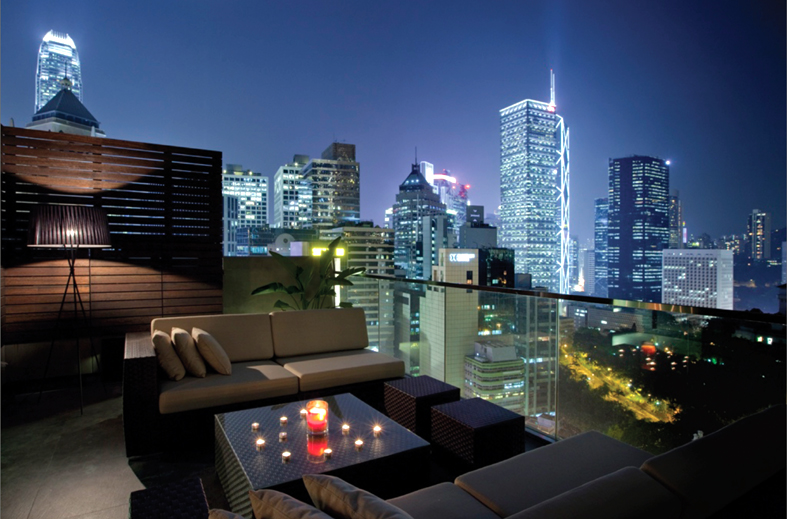 Working with little space and imported materials, a new wave of interior designers is managing to breathe life (and cash) into these old “walk-ups”.
Working with little space and imported materials, a new wave of interior designers is managing to breathe life (and cash) into these old “walk-ups”.
Andrew Bell is one such interior designer in Hong Kong. A small-scale developer, he believes that stripping the insides of decaying tong-lau apartments and restoring them with period features has created real estate gems. The Australian former graphic designer says he’s always felt like this about older buildings.
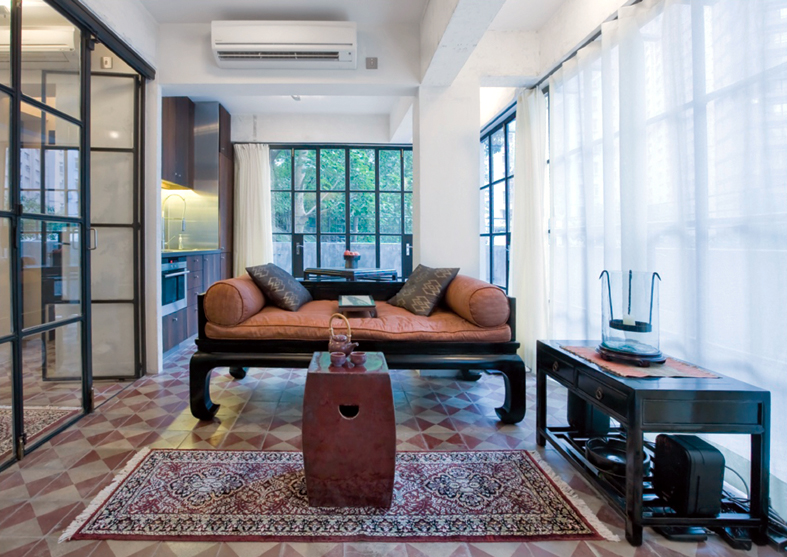 “I grew up in Melbourne, which at the end of the 1890s was a rich city in the former British Empire with very grand buildings that were central to its grid system,” recalls Bell. “In the 1960s when they started tearing down many period buildings, I thought if they had just waited another 60 years they would have realised what an amazing city they’d have as a showpiece to the world.”
“I grew up in Melbourne, which at the end of the 1890s was a rich city in the former British Empire with very grand buildings that were central to its grid system,” recalls Bell. “In the 1960s when they started tearing down many period buildings, I thought if they had just waited another 60 years they would have realised what an amazing city they’d have as a showpiece to the world.”
“I’ve always thought that such buildings attribute so much to the heritage of a city and people living in that city,” says Bell citing his own tong-lau-styled apartment on Hollywood Road as compared to the glitzier modern buildings adorning Hong Kong’s skyline. Bell trained as a graphic designer, worked in advertising for many years and started to slide into semi-retirement when people started asking him to design their flats. After working for big companies such as Ogilvy and Mather and Grey Design for about 18 years, Bell decided to try his hand at interior design, taking on projects as a hobby.
Bell has now been practicing for 6 years, during which time he has managed to transform 60 small apartments into authentic Old Shanghai-styled spaces. He uses simple tiling sourced from Italy and France featuring delicate Chinese detailing for kitchens and bathrooms. “I add value to the space by creating a lovely old art deco theme throughout,”
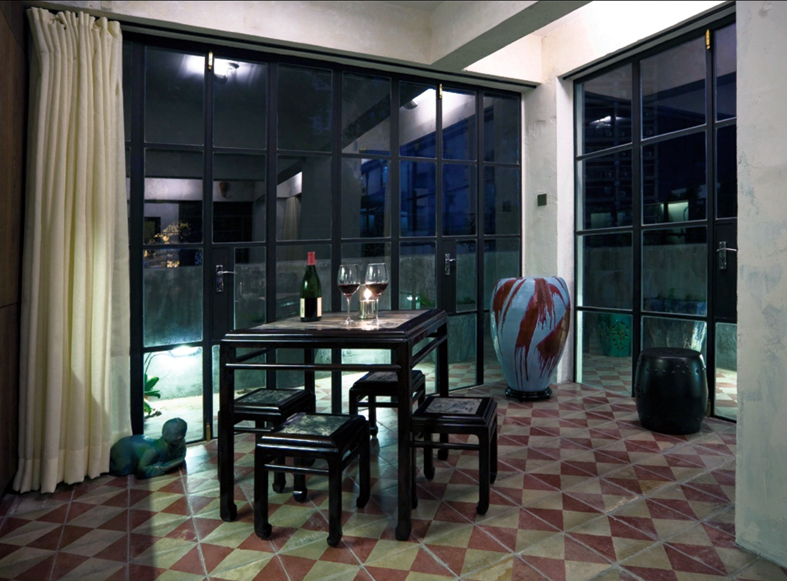 However, it’s clear from the interior of his own apartment that windows are his trademark. Bell removes the incongruous aluminium windows of previous renovations and reinstates the original iron-framed windows, often complimenting them with large folding industrial-style internal and external walls.
However, it’s clear from the interior of his own apartment that windows are his trademark. Bell removes the incongruous aluminium windows of previous renovations and reinstates the original iron-framed windows, often complimenting them with large folding industrial-style internal and external walls.
“When I design flats, I target the strictly young, single expatriate male. They’re probably in Hong Kong on their first overseas assignment and they don’t mind paying a premium for a smaller space because of the vintage Oriental feeling that the interiors convey. They have big salaries and big housing allowances and they want a taste of the city that may just be a transit zone for them. In a place like Hong Kong, this market is massive,” explains Bell. He has primarily worked on apartments located in Hong Kong’s hip and edgy Sheung Wan and Soho (south of Hollywood Road) districts.
“In Sheung Wan, there are a lot of little galleries and bistros creating a warm and tight village-like atmosphere that I’ve always loved, comments Bell. “Small communities where you can say hi to people and where you can just walk to where you want to go is what adds personality to the area. All I can hope to do is stay true to this in my designs through subtle Oriental finishes,” explains Bell.
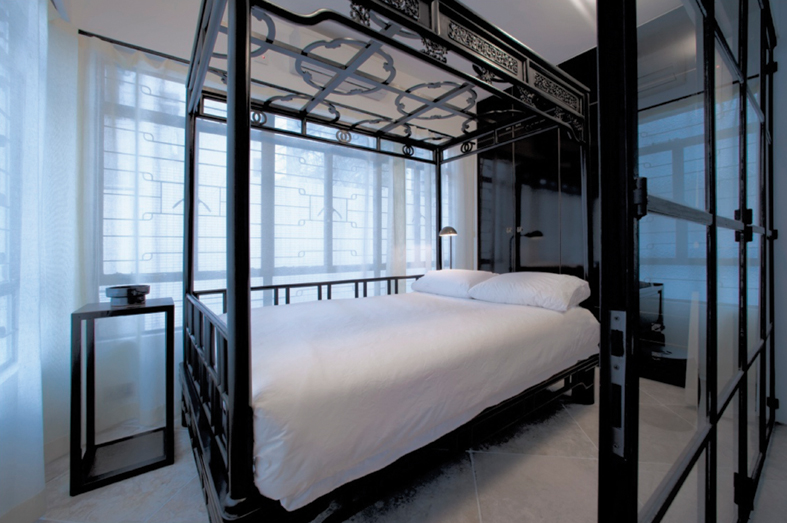 When asked about the challenges he has faced when reinstating the former tong-lau feel, Bell says: “Yes, we’ve come across hurdles posed by Hong Kong’s Urban Renewal Authority (URA) who are keen to buy up these tong lau blocks, bulldoze them and build brand new, but boring, box-style apartments.”
When asked about the challenges he has faced when reinstating the former tong-lau feel, Bell says: “Yes, we’ve come across hurdles posed by Hong Kong’s Urban Renewal Authority (URA) who are keen to buy up these tong lau blocks, bulldoze them and build brand new, but boring, box-style apartments.”
Bell cites the example of a friend of his who used to live in New York until he moved to Hong Kong’s trendy SoHo area. Having already lived in a New York loft, his friend decided to revamp his tong lau to give it a loftier, artsy look too, adding Bell’s signature railings on its windows. He merged two flats to create a spacious abode in what is usually a crowded and noisy area. However, the URA is threatening to take it away from him and he is currently pursuing them in court.
“Old Hong Kong is fast disappearing,” states Bell “We have to act quickly to preserve this architectural gems that are also part of Hong Kong’s historic past, but nobody seems to seriously appreciate the necessity of preserving these areas.”
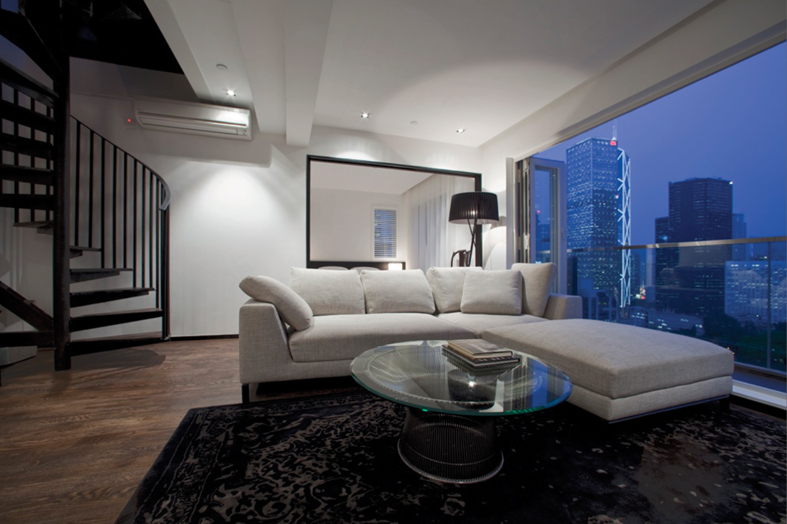 ” They’ll perhaps preserve a building, such as the old former Police Headquarters building on Hollywood Road or the Central Market that caused a huge public outcry. But what I’d like to see more is whole communities being saved. Places such as Wing Lok Street and areas in NoHo and SoHo are all in dire need of government protection, not government prosecution.”
” They’ll perhaps preserve a building, such as the old former Police Headquarters building on Hollywood Road or the Central Market that caused a huge public outcry. But what I’d like to see more is whole communities being saved. Places such as Wing Lok Street and areas in NoHo and SoHo are all in dire need of government protection, not government prosecution.”
“The government needs to recognise that the community is part of its heritage as well. The restaurants, the footpaths, the markets, they are all part of street life. They need to be appreciated much more for the charm and colour they bring to a place like Hong Kong.”
Bell sees beauty in the dirt and disorganisation of the narrow, hilly alleyways of Hong Kong’s streets. Whether it’s the box-maker living in the building next to him with his two children running amuck, the friendly restaurant owner wishing him a good morning or the bustling market decked in its traditional red and blue striped covers, the community Bell lives in and loves is authentic. With Hong Kong’s sky-high property prices, the buildings that are taking most of the fall are the low-rise tong laus, the walk-up apartment buildings that are to Hong Kong what Brooklyn brownstones are to New York.
“In short, tong-laus are what give Hong Kong its character,” states Bell.













